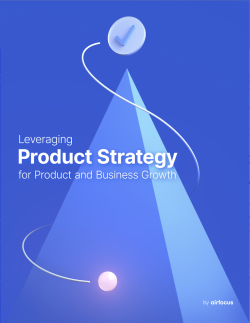User Persona
What is a user persona?
Definition of user persona
A user persona is a semi-fictional character created to represent different customer types that use a company’s products or services.
User personas are profiles of imagined individuals that reflect a business’ core customer base. User personas are written as if the individual were real, but at the same time, they reflect common attributes across a cohort of people. They are semi-fictional, in that they are not a specific individual, but their characteristics should be gathered from observation of real-world users.
User personas are intended to give a reliable and realistic reflection of how a business could expect a group of people to engage with a product, service or campaign.
The benefits of user personas
A well-researched, analytical and data-driven user persona is hugely beneficial to a company's product development, sales strategies and marketing campaigns.
The function of user personas is to ensure that company initiatives (such as marketing or product development), are done with the user very firmly in mind.
With respect to product development, this means avoiding the development of unnecessary features or products, by referring back to the users genuine needs. Instead of developing what designers or engineers want to build, efforts are concentrated only on what a user persona would find useful or practical to have. User personas are further used to understand if the target audience will use and engage with a product in the expected or desired way.
Marketing plans are also best executed with a user persona at the center. The tone of voice, publishing channels, and advertising strategies should all have a reference back to what would be appealing to the key audience, represented by the user persona.
In addition, sales initiatives that encompass when and how to approach a prospect, either via calls, emails or meetings, are improved when these are developed around a user persona profile.
Examples of user personas
Goal-directed personas:
A goal-directed persona focuses on the methodology or approach that a user takes to solve a problem. By establishing the processes and workflows that a user would take, you aim to know how a user would use or engage with a product. This user persona is therefore associated with user experience (UX) and product development.
Role-based personas:
A role-based persona understands where a persona is within an organization, and how that affects their behavior and decision making. This user persona aims to broaden out the view from a goal-directed perspective to one that looks at how a job function and environment will impact the demands from a product or service.
Engaging personas:
Engaging user personas are a holistic view of a persona that gives designers as much as possible to engage with. This persona is fleshed out with characteristics ranging from emotions and social background to their psychology. Emphasis is put on creating stories that enable the persona to come to life. This strategy improves design processes by helping teams genuinely envisage a person, and therefore deliver a better product.
When do you need a user persona?
You need a user personas to help guide any ideation process. A persona helps you understand how a user behaves, what they experience, and what their goals are. It gives your team an empathy with the end user that helps them focus their efforts. In understanding that there are different personas, a business understands different needs and expectations, and how to cater to them.
What are user personas used for?
Developing user persona gives a point of reference throughout a development cycle, to help ensure that progression aligns with genuine user needs. By asking questions such as "How would Paul, Sarah, and Amir feel, react, experience, or behave with respect to change X feature Y or change Z" you prioritize empathy with the user over internal business demands or preferences.
History of user personas
The development of persona first began in the early 1990s, when researchers began to discuss varying use of IT systems through concepts of "user archetypes", "user models" or "lifestyle snapshots". This understanding of cohorts and behavior patterns lead to the creation of a singular profile that would act as a representative of a particular group.
What are some common challenges in creating user personas?
Developing in-depth user personas usually requires an extensive allocation of time and resources, which can often lead to user personas that are too high-level, and do not accurately reflect the audience a business is targeting.
Companies can consequently cut corners by having just a small number of user interviews, or relying on small sets of user data, and extrapolating extensively from this base set. This inevitably leads to unreliable or highly speculative user personas.
Worse is when working teams undertake no research initiatives, and instead, gather together and form user profiles from their instincts or experiences. Formulating personas in this way is problematic, as their development comes with internal bias from team members that prejudges or predetermines a user’s needs. Narrow observation of specific users can also over or under-appreciate certain characteristics.
Poorly executed user personas, or personas that are created to self-validate what a team wants to hear, can, therefore, have the opposite effect of their intended purpose of creating a genuinely representative external point of validation.
A step-by-step guide to user persona development
Here is a simple walkthrough for developing user personas:
Confirm what you already know
You’ll already have valuable insights into your audience, even if you’ve just launched your company. Create a quick list of everything you already know about the users you want to reach.
Decide what you want to know
Now that you’ve clarified what you already know about your audience, consider what you’d like to know next. Their average income? Which of your competitors’ products do they use? How much would they be willing to spend for a higher-quality product?
Note any possibilities that come to mind with your product team.
Build a list of questions to survey your users and send it out
Based on your findings in the previous steps, create a set of questions to include in a user survey. Only ask questions that are of tangible value to you and respect users’ time. Send the survey out with a polite request to participate, and be sure to include a thank you message to everyone who completes the survey.
Collect data
Gathering data will help you build accurate personas. You can try different methods for gathering your data, including:
User surveys (as above)
Product usage data
Other user surveys (even if issued by other companies)
User interviews
Product analytics
Keep all your data organized so it’s easy and convenient to study.
Analyze the data
Analyzing data will reveal valuable patterns like similarities and differences among users that can help you understand contrasting requirements/goals. Segment users based on this information. Some may be “professional users,” others may be “domestic users,” and a smaller group could be “learning users.”
Create user personas based on your segments
The goals and needs of each user segment will differ, even only slightly. Understanding these differences and similarities can help you create relevant products or features.� User personas should all follow the same general template and include key details, like:
Age
Qualifications
Income
Responsibilities
Goals
Product pain points
Personas need to have a neat, clear format that allows you to pinpoint essential information quickly.
Create negative personas (optional)
Some product teams build negative personas for people who are specifically not the target audience for their product or service. Negative personas can help product managers avoid wasting time and resources on the wrong audience meaning product teams can focus on creating the right products or features for the right people.
Validating user personas
You’ve put time and hard work into building user personas — now it’s time to validate them.
Confirming that your personas accurately represent users is vital. Otherwise, you may develop products and features based on mistakes or assumptions. Any errors should be identified and fixed to reduce the risk of wasted resources.
One part of validating personas is creating feedback loops. Invite users to share their thoughts on a product as a whole, specific features, or both, and then respond. Engage with users, and find out more about their experiences. That will help you validate and refine your personas over time.
Usability testing matters, too. Monitor users’ experiences with your product to learn from the issues they encounter while completing tasks and utilizing features.

General FAQ

Glossary categories
Create effective product strategy

Experience the new way of doing product management








